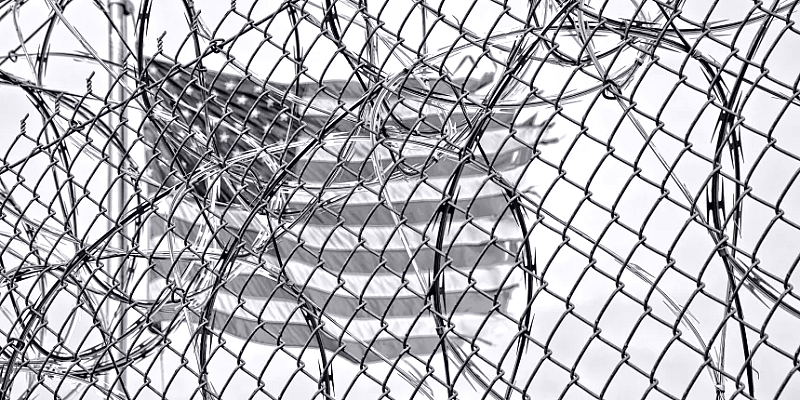Montrell Carmouche praises Mexico’s white beaches and coral reefs, selling it by telephone as a holiday destination while trying not to reveal that he has never been there – or that he is, in fact, an inmate imprisoned in the United States.
His story – and his pay, a meager $6 commission per sale – are featured in a report released this week by the powerful American Civil Liberties Union (ACLU) and the University of Chicago which documents the work of the US prison population.
Inmates “are paid pennies for their work in often unsafe working conditions even as they produce billions of dollars for states and the federal government,” according to ACLU researcher Jennifer Turner, lead author of the paper.
The US incarceration rate is among the highest in the world, with more than 1.2 million people held in state and federal prisons.
Two-thirds of them have jobs behind bars and produce more than $11 billion worth of goods and services each year, according to the report, “Captive Labor: Exploitation of Incarcerated Workers,” which compiles other surveys, official documents and interviews with inmates.
The vast majority – more than 80 percent – are employed to keep their prisons running as cleaners, cooks, electricians and plumbers for wages ranging from $0 to $1.24 an hour.
The Bureau of Prisons described the work program in a statement to AFP as a means of reducing “inmate idleness, while allowing the inmate to improve and/or develop useful job skills, work habits, and experiences that will assist in post-release employment.”
In 2004, a conservative estimate of the value from their work was $9 billion, the ACLU report says.
“All the jobs we are doing in prison are not really benefiting us; it is more benefiting the prison system,” commented Latashia Millender, an Illinois inmate quoted in the paper.
“I work a job making $450 for a whole year. If they were to pay a civilian for the same job that would be his pay for just one week.”

‘Fundamental human rights’
Some 50,000 prisoners provide goods and services that are sold to other government agencies – jobs including washing sheets for hospitals, or making uniforms for public employees.
That labor was worth $2.09 billion in 2021, according to the National Prison Industries Association.
Again, the wages are nominal: in Oregon, for example, the vehicle registration agency pays inmates $4 to $6 a day to make license plates, compared to $80 for free employees.
Finally, fewer than 5,000 inmates, including Montrell Carmouche, work for private companies, whose clients often do not know the origin of the products.
These jobs, which pay slightly more, are in high demand. But most of the earnings are seized by the government, often to reimburse their legal fees.
Regardless of the job, the report’s authors point out that inmates have little or no training for the tasks assigned to them, generally cannot refuse them and lack the equipment necessary for their safety.
In its statement, the Bureau of Prisons said that “human treatment” of inmates was “a top priority,” and added that subject to approval prisoners can instead do drug treatment, education or vocational training in place of some or all of the work program.
Only inmates who are “physically and mentally able” are assigned to work programs, it said, adding that the programs “are to meet the appropriate minimum standards for health and safety.”
For the report’s authors, that was not enough.
“The labor conditions of incarcerated workers in many US prisons violate the most fundamental human rights to life and dignity,” concluded Claudia Flores of the University of Chicago, co-author of the study, recommending a series of reforms, including the imposition of a minimum wage.
ADVERTISEMENT
ADVERTISEMENT


































